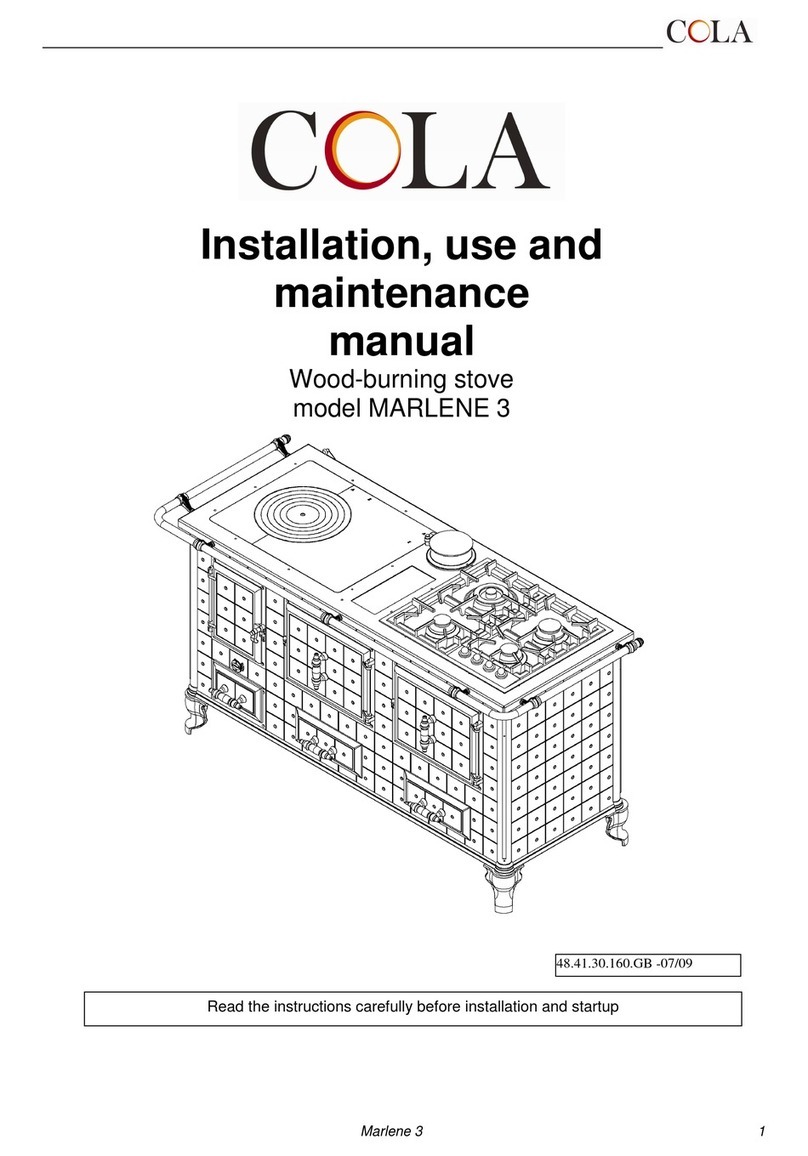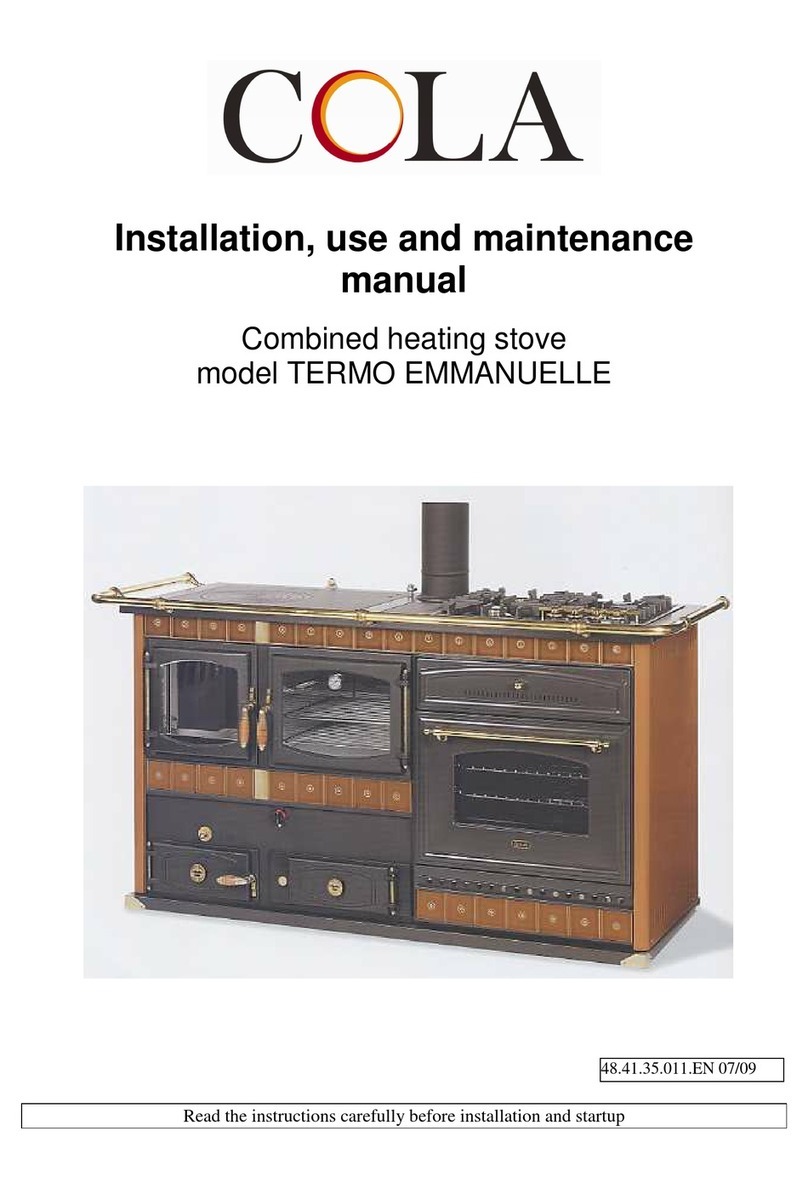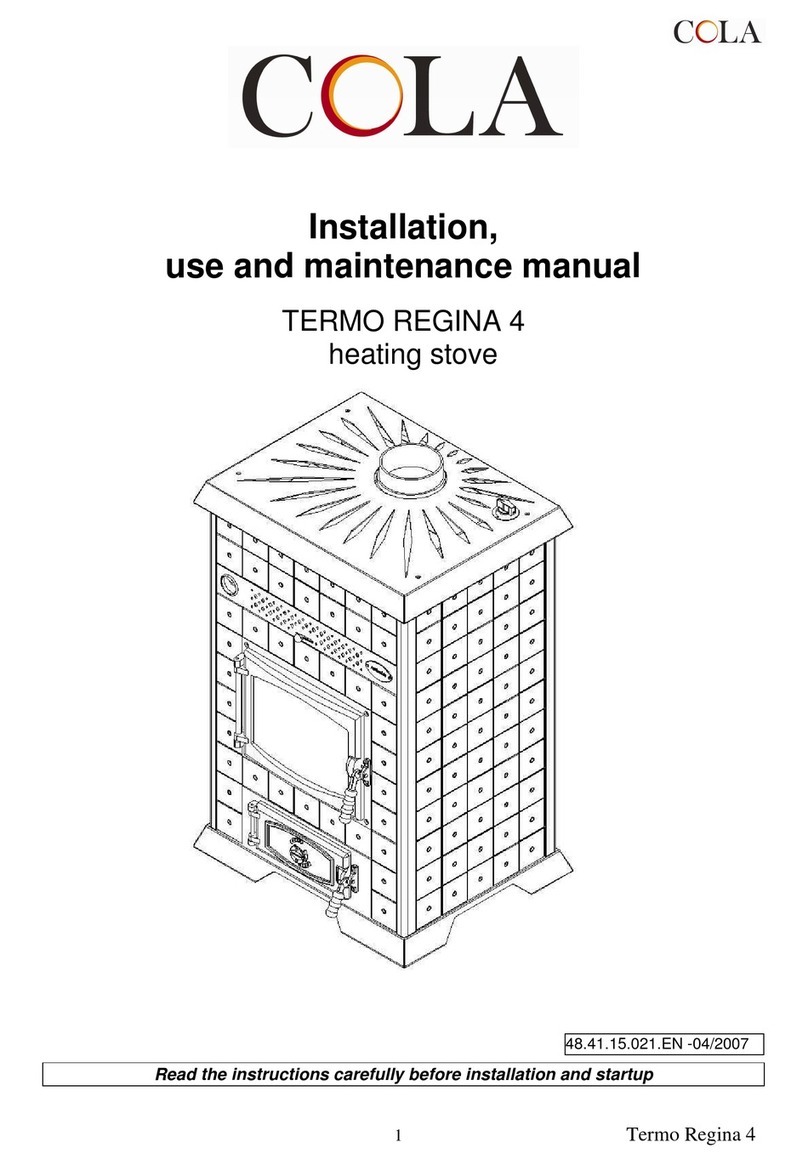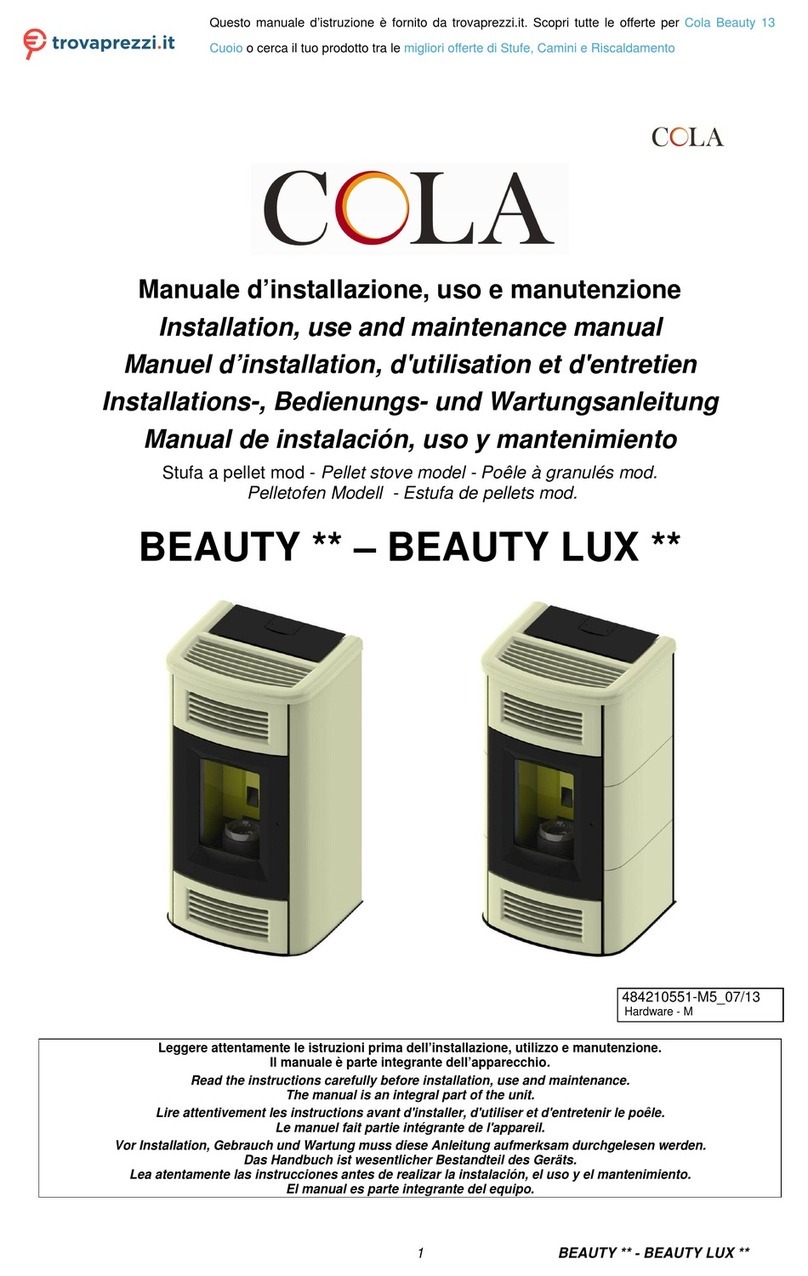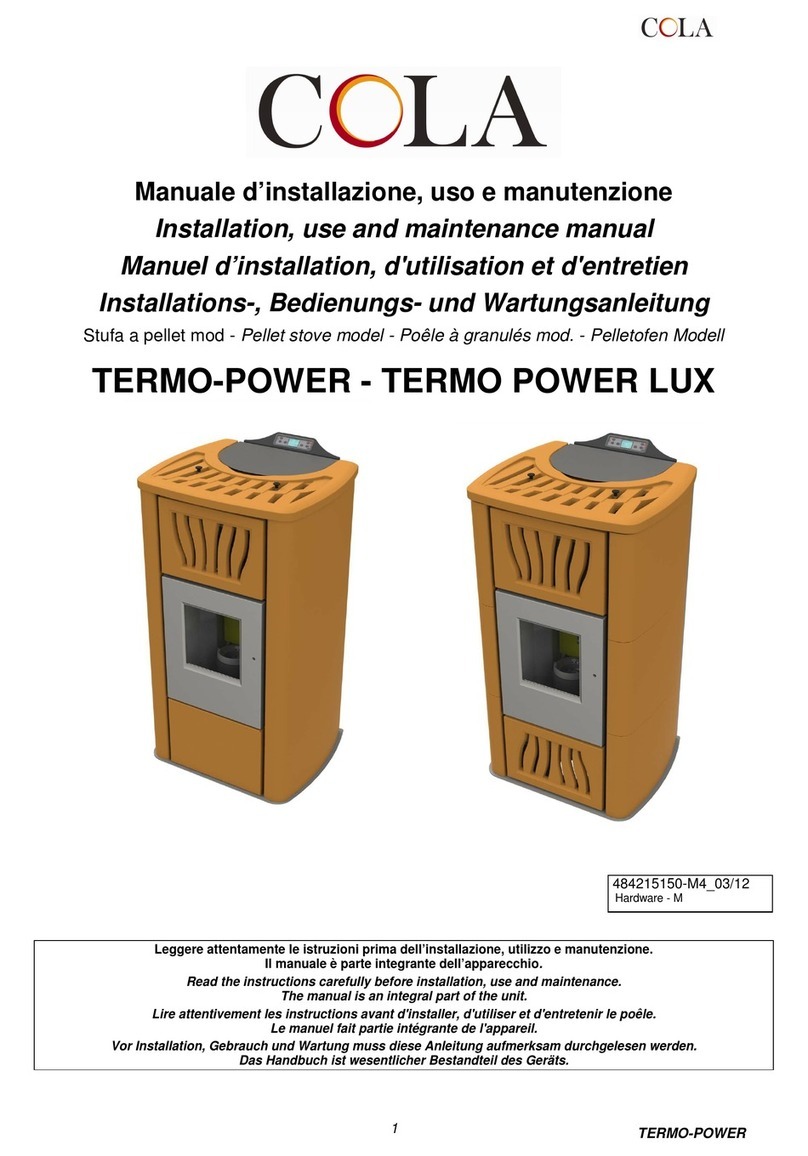
2 Termo JOHANNA
1 - GENERAL INFORMATION
1.1 Introduction
Dear Customer
First of all we wish to thank you for the trust placed in us by purchasing one of our products. Please
read and carefully follow the advice given in this installation, use and maintenance manual in order
make best use of the product.
Make sure:
-installation, testing and cleaning are carried out according to that described in this
manual, and in compliance with local regulations, including the national and
European reference standards; otherwise the product warranty will be invalidated.
-to have the flue inspected by a specialised technician.
For operation faults, doubts or problems please contact your nearest service centre.
1.2Safety rules
-
Read and follow the instructions given in the installation, use and maintenance manual.
- With the HEATING model , the stove must never be used without being connected
to the heating system and without water in the heating chamber.
-Connect the stove to an approved flue not shared with other appliances.
-Make sure the stove is cold before carrying out any cleaning or maintenance.
-Do not use flammable liquids or substances such as alcohol or hydrocarbons to light the stove.
-The stove is suitable for intermittent combustion and must only be used
with fuels having the characteristics described in this manual.
-The room where the stove is installed must have openings or air inlets communicating
with the outside of the house and able to ensure a sufficient air change.
-Never close the combustion air inlet and fume outlet openings.
-Do not handle easily flammable or explosive substances in the vicinity of the stove when it is
operating.
-During operation, the intense heat generated by combustion of the wood makes the outside
surfaces of the stove very hot, and in particular the fire door, handle, fume exhaust pipe and cover;
therefore avoid contact with such parts without suitable protection.
-Keep objects which are not heat resistant at a suitable distance.
-Clean the ash pan regularly.
-Hot ashes must not be put in waste bins or left unattended outdoors.
-Warn children and guests about the hazards described above.
-In case of operation anomalies, relight the stove only after eliminating
the cause of the problem.
-Very hot fats and oils tend to catch fire easily, therefore food rich in fatty substances must be prepared with maximum
attention.
- If a foul air/steam extractor hood is operated in the same area or near the stove, burnt gases may escape from the fire
door during loading, if the room is not adequately aired from the outside.
- The oven/food-warmer must only be used for its intended purpose, i.e. for heating and/or cooking
food; any other use is deemed improper and hazardous.
The Manufacturer declines any liability for problems, breakage or accidents due to non-compliance with or failure to apply
the instructions given above and in the manual.


















